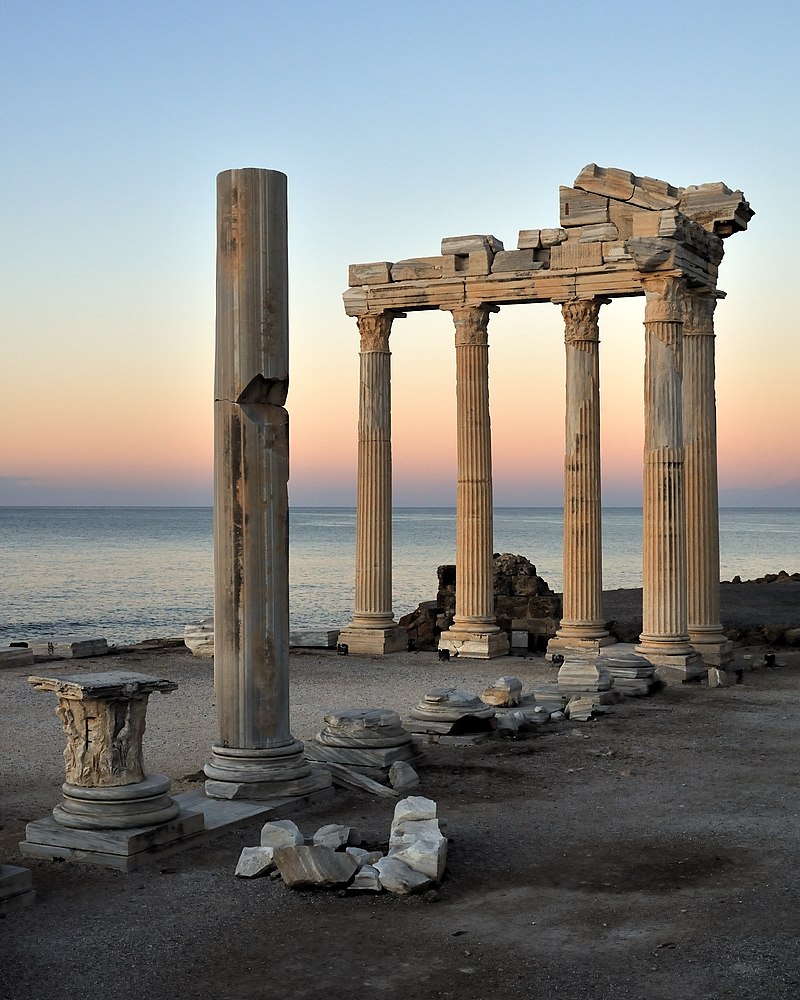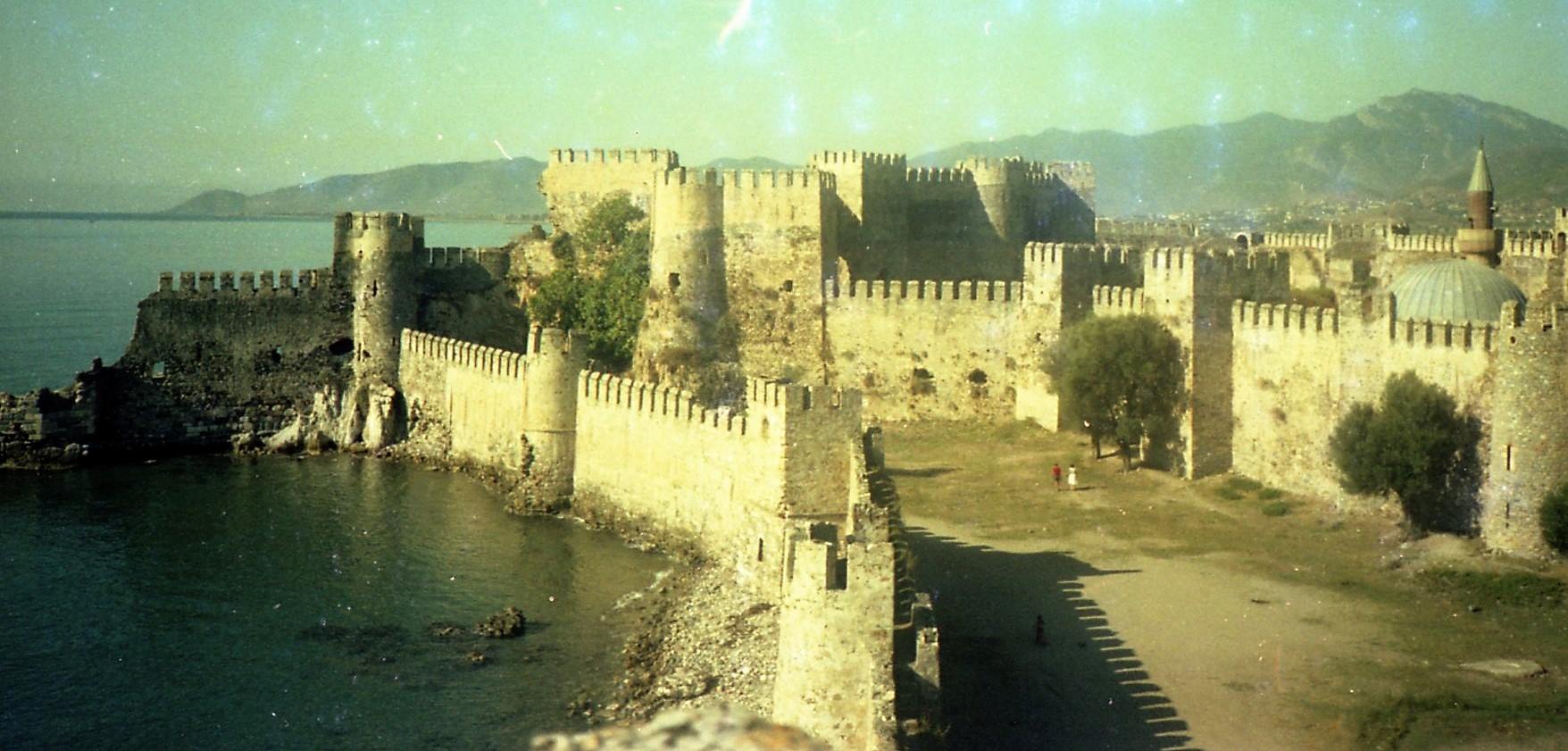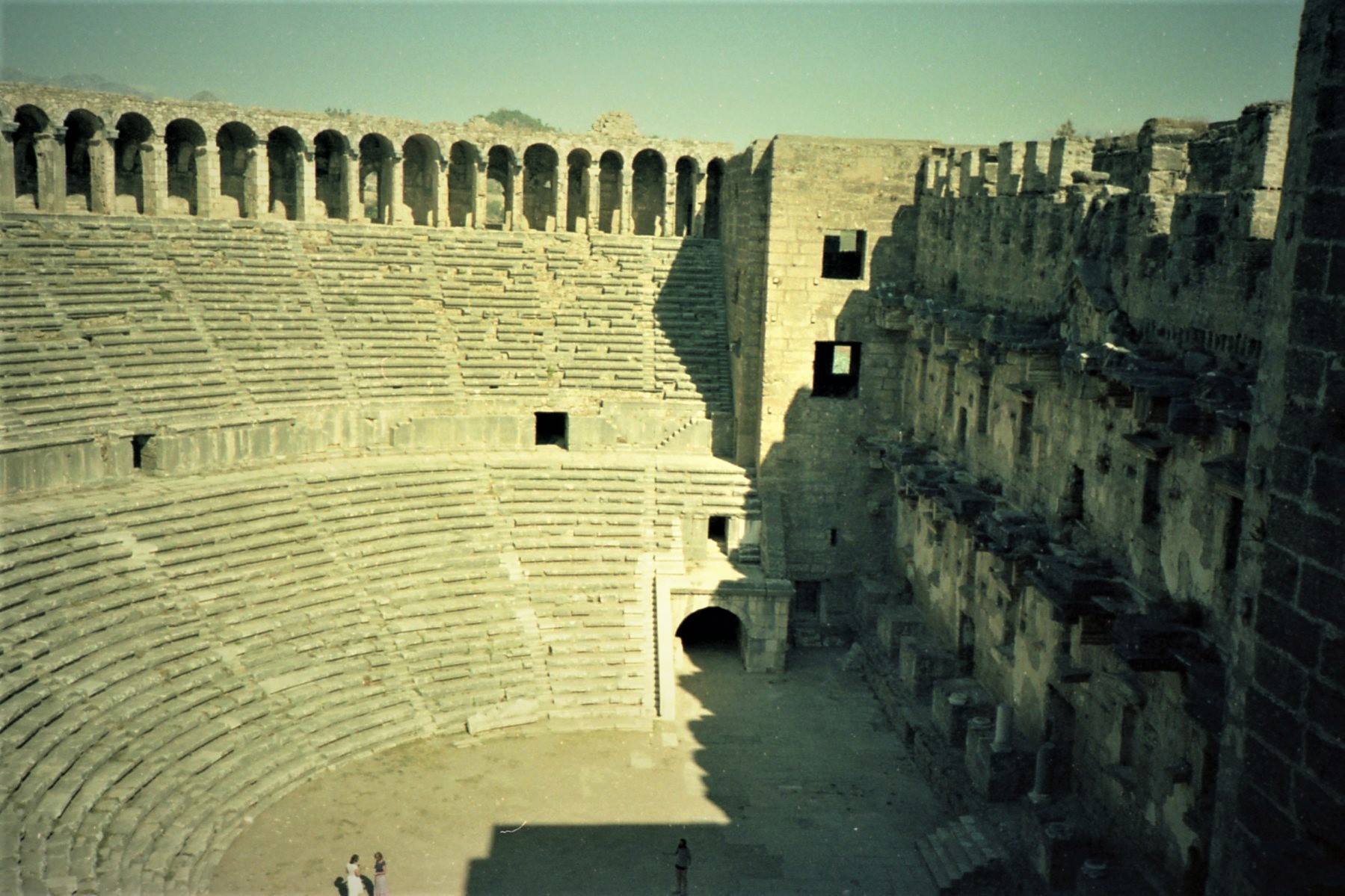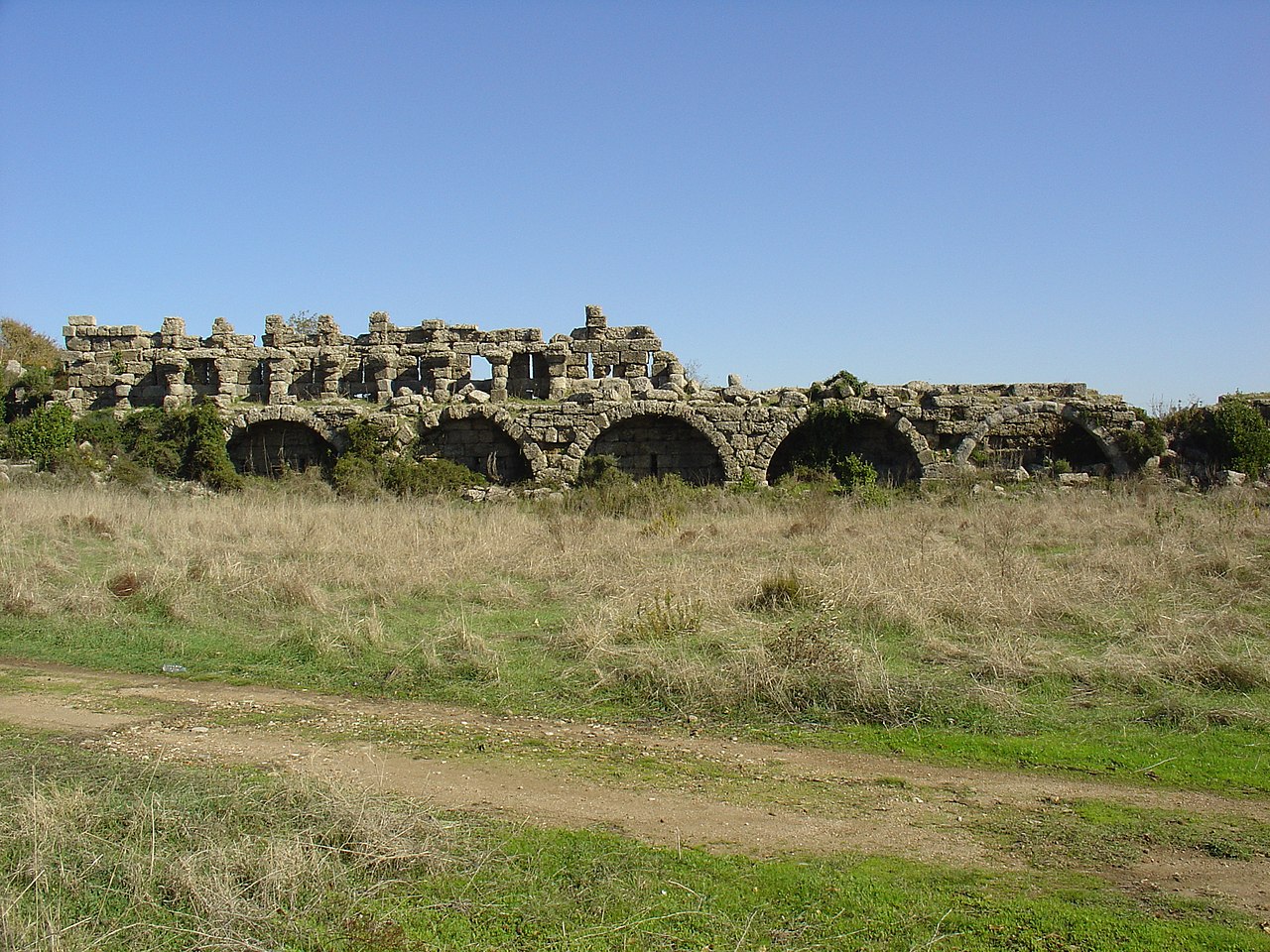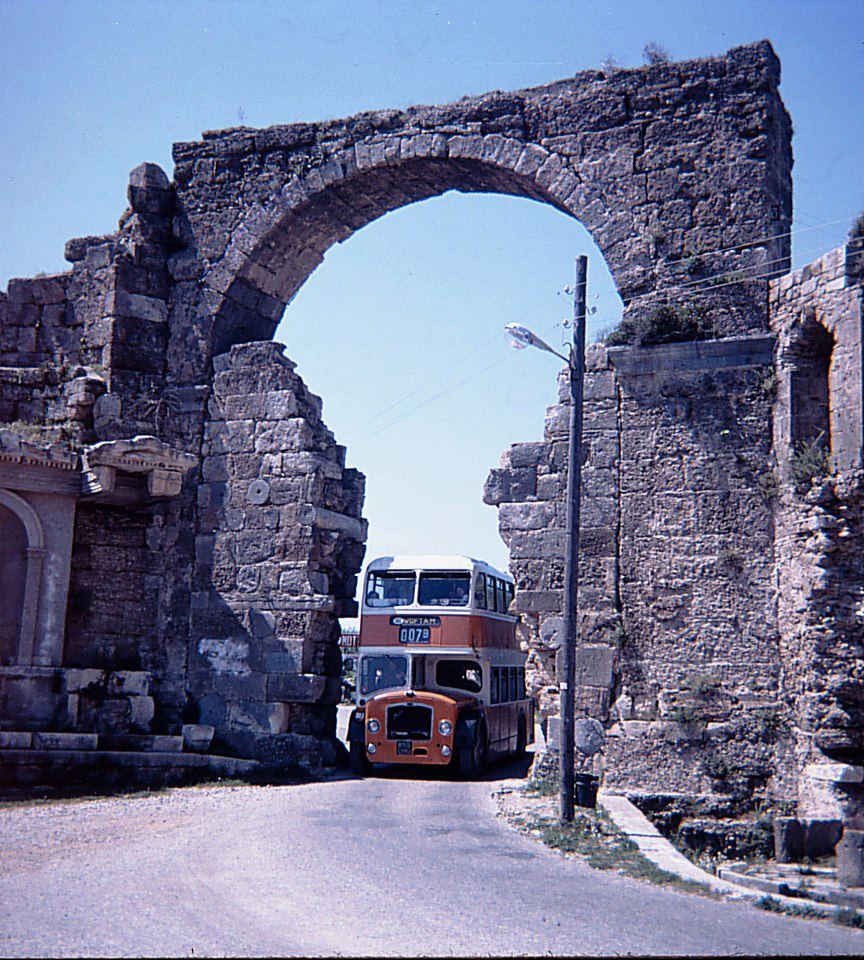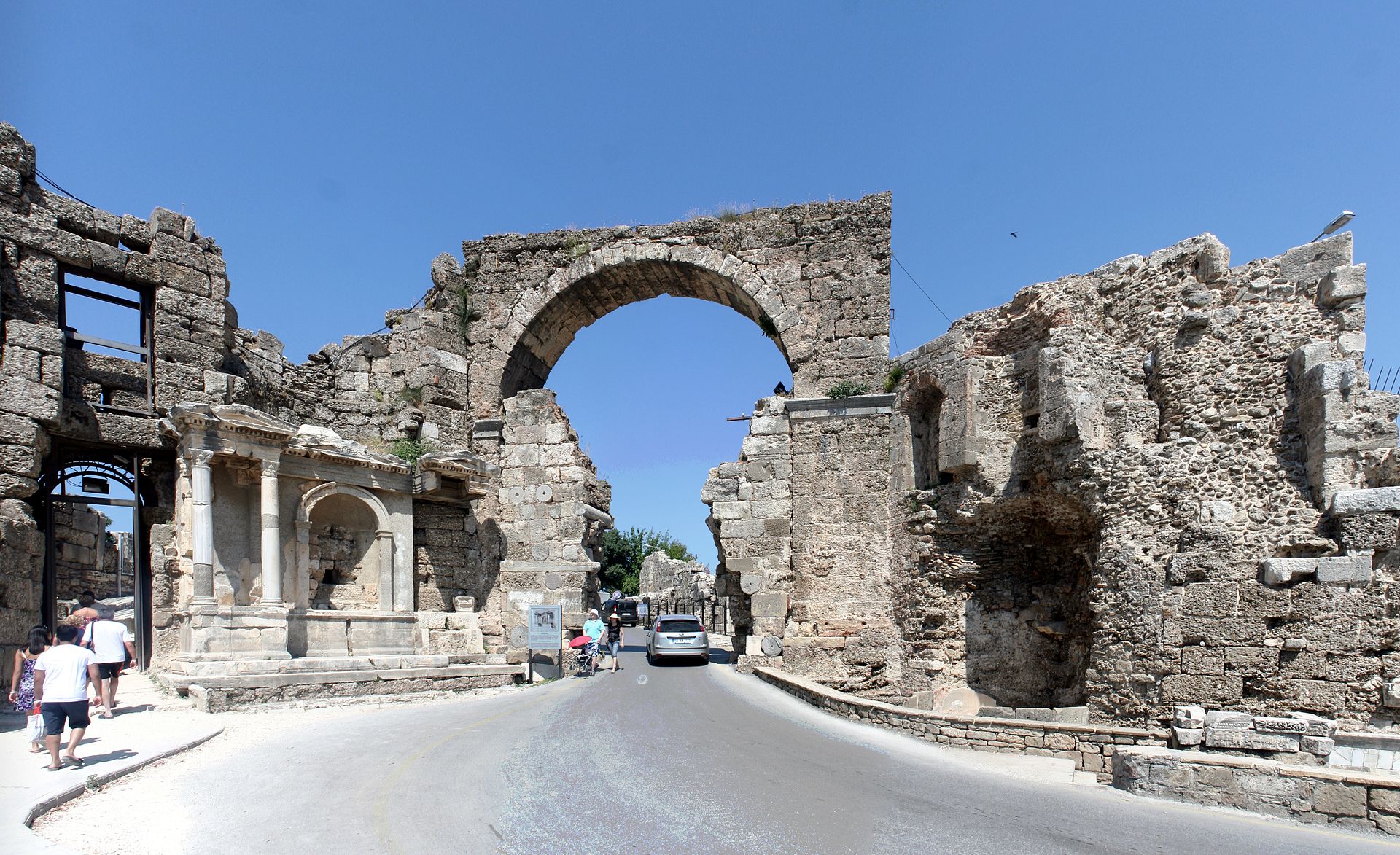
AsianOverland.net
Tour Guide - Itinerary
Asian Overland Sydney to London
Started 22/06/2022 Finished 21/06/2023365 Days ITINERARY
Day 283 date 31/03/2023MANAVGAT to SIDE, TURKIYE
ASIANOVERLAND.NET LONDON TO SYDNEY DAY 283: MANAVGAT TO SIDE, TURKIYE
Alexander the Great occupied Side without a fight in 333 BC, and left a single garrison behind to occupy the city, introducing the people of Side to Hellenistic culture, which flourished from the 4th to the 1st century BC.
After Alexander's death, Side fell under the control of one of Alexander's generals, Ptolemy I Soter, who declared himself king of Egypt in 305 BC. The Ptolemaic dynasty controlled Side until it was captured by the Seleucid Empire in the 2nd century BC. Despite these occupations, Side preserved its autonomy, grew prosperous, became an important cultural centre, and possessed an important harbour. Between 188 and 36 BC Side minted its own money, tetradrachms showing Nike and a laurel wreath (the victory sign).
In the 1st century BC, Side reached a peak when the Cilician pirates established Side as their chief naval base and a centre for their slave-trade.
The Roman consul Servilius Vatia in 78 BC and later the Roman general Pompey in 67 BC, brought Side under the control of the Roman Empire.
Emperor Augustus placed Side in the Roman province of Galatia in 25 BC. Side began another prosperous period as a commercial centre through its trade in olive oil, and its population grew to 60,000 inhabitants.
Side’s large commercial fleet engaged in piracy, while wealthy merchants paid for public works, monuments, and competitions, as well as games and gladiator fights. Most of the Roman ruins at Side date from this period of prosperity.
The great Side ruins are among the best on the Asian overland, covering a large promontory with a wall and moat separate from the mainland. The colossal theatre of the 2nd century is less well-preserved than Aspendos, but is almost as large, seating 20,000 people. It was converted into an open-air sanctuary with two chapels during the Byzantine period (6th century).
The well-preserved city walls provide an entrance to the site through the Vespasian Gate from the 2nd century BC.
The colonnaded street had marble columns whose remains are near the Roman baths, which have been converted into a museum displaying Roman statues and sarcophagi.
The early Roman Temple of Dionysus and a Byzantine Basilica are near the theatre, with a fountain at the entrance.
Other buildings include three temples, a grotto or fountain building of elaborate design and ancient Greek and Roman brothels.
The Roman aqueduct dates from 2nd half of the 2nd century AD and is 30 km in length. The aqueduct has an exceptional number of preserved bridges, as well as tunnels. The altitude difference between the water source and city is only 36 m, so it was necessary to keep the route as straight and short as possible through the hilly terrain, requiring 22 bridges and 16 tunnels, each between 100 and 2260m long.
© This work is copyright. Apart from any use permitted under the Copyright Act 1968, no part may be reproduced by any process, nor may any other exclusive right be exercised, without the permission of Peter Searle, peter@portseavillageresort.com; 1980-2024.
Website built by Justin O’Dea www.webdeveloperdocklands.com.au
